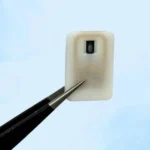In a study published in Environment International, researchers have demonstrated the capability of human skin to absorb cancer-causing flame retardants found in everyday items.
Using advanced 3D printed skin models, the scientists demonstrated that polybrominated diphenyl ethers (PBDEs) present in microplastics can permeate the skin barrier and enter the bloodstream within 24 hours.

The study, conducted by Brunel University London and the University of Birmingham, highlighted the heightened absorption of PBDEs by sweatier skin compared to dry skin. This revelation underscores the potential health risks posed by these pervasive pollutants, which are commonly added to plastics, furniture, fabrics, and electronics.
“We confirm for the first time that human exposure via skin contact with microplastics containing PBDEs contributes to the human body burdens of these toxic chemicals,” said Brunel exposure scientist Dr. Ovokeroye Abafe.
“These results provide important experimental evidence for regulators and policymakers to legislate for microplastics and safeguard public health against such exposure, which contributes to the human body burdens of toxic additive chemicals linked with causing cancer and disruption of the endocrine system.”
With microplastics increasingly found in various human body parts, concerns about their potential health impacts are mounting. The study’s use of state-of-the-art 3D printed skin models offers a precise method for monitoring chemical absorption and underscores the urgency for reevaluating regulations surrounding microplastics.
This research underscores the urgent need for policymakers to reevaluate regulations surrounding microplastics to safeguard public health.
You can read the full research paper, titled “Assessment of human dermal absorption of flame retardant additives in polyethylene and polypropylene microplastics using 3D human skin equivalent models” at this link.
Source: phys.org
Come and let us know your thoughts on our Facebook, X, and LinkedIn pages, and don’t forget to sign up for our weekly additive manufacturing newsletter to get all the latest stories delivered right to your inbox.










